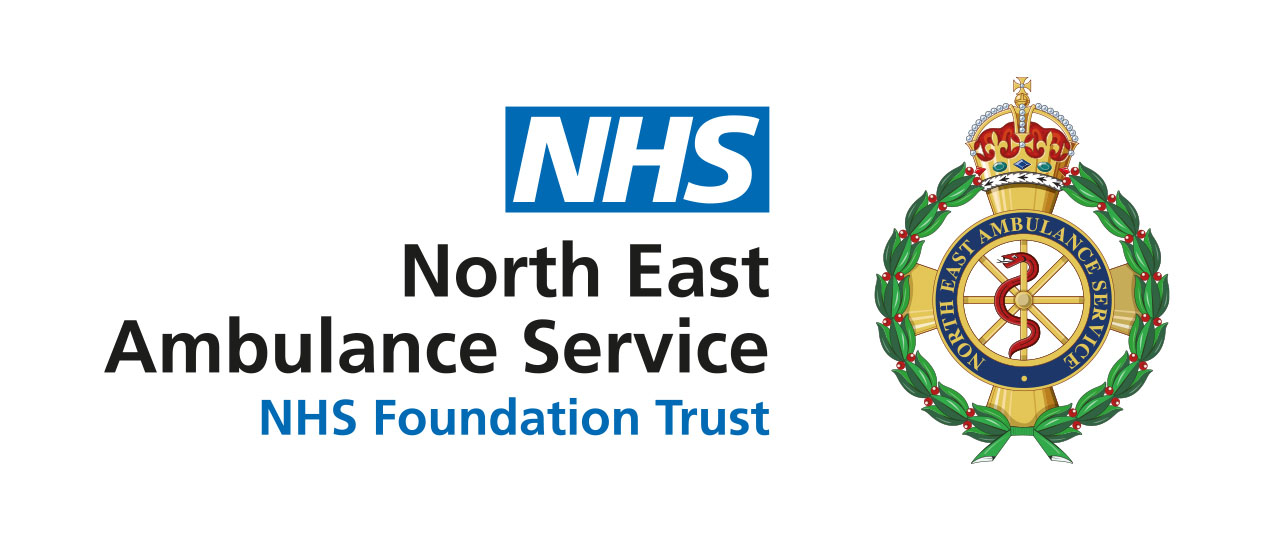Football coach is alive and kicking thanks to colleagues and emergency crews
A football coach who suffered a cardiac arrest during an under 18s training session has reunited with the ambulance crew, his colleagues and hospital staff to thank them for saving his life.
Simon Brown was coaching the session at North Shields Junior AFC at John Spence Community High School on 14 December when he suddenly collapsed. Simon’s son, 18-year-old Ethan, ran over to his dad and shouted for help.
Simon’s colleagues Stu Proctor and Paul Geddes immediately rushed over to Simon whilst Derek Bell rang 999 where he got through to North East Ambulance Service call operator Kerri Corbett.
With support from Kerri, Stu and Paul started CPR on Simon and Jessica Ross who was working in the shop on the side of the pitch, rushed to collect the defibrillator from inside the school.
North East Ambulance Service paramedics Kevin Cook and Jack Beattie were the first to arrive on scene. They took over CPR and shocked Kevin with a defibrillator four times and administered adrenaline before gaining a pulse.
The 53-year-old from North Shields said: “I can remember feeling out of breath and thinking that I couldn’t catch my breath for a while, then all of a sudden felt really light headed and that’s all I remember until I started to come round in the ambulance and the paramedic was telling me what had happened.
Kevin Cook, who joined NEAS five years ago and qualified as a paramedic in September last year said: “Jack and I had just finished treating another patient when we received the call to attend a patient in cardiac arrest, we immediately responded as we weren’t far away from the school.
“It is without a doubt that Simon having CPR whilst we were on our way gave him the best possible chance of survival. Simon’s story just goes to show that this can happen anywhere and at any time. Being aware of CPR and what to do in this situation is invaluable and can potentially save someone’s life.”
Soon after Kevin and Jack arrived, their colleagues, advanced technician Nicola Ballantyne and Paramedic Alex Robbins, arrived and together they transported Simon to Northumbria Specialist Emergency Care Hospital.
Simon was looked after by A&E staff before being taken to Ward 10, where he was cared for by Rachel Thompson and Alison Savage until he was transported to the Freeman Hospital to have an implantable cardioverter-defibrillator fitted.
He said: “My family and I had planned to spend Christmas Day in the Freeman hospital which was totally unexpected but thanks to the amazing staff at the Freeman I was able to go home on Christmas Eve and spend the day with my family.”
Paramedic Jack who joined NEAS four years ago added: “It’s been really great to see Simon and his colleagues again and to see him doing so well after what would have been a terrifying experience for everyone involved. I’m glad that he’s doing okay and we were able to bring him back to his family.”
Simon has been reunited with all who were there to help him on that day to personally thank them for saving his life.
Simon said: “It has been especially important to me to be able to personally thank all who were involved in saving my life. From my colleagues, to the NEAS ambulance crews who brought me back and the outstanding care I was given at both hospitals, without them all working together, I wouldn’t be here today and I can’t thank them enough.”
Call operator, Kerri Corbett has worked at NEAS for almost six years said, “It's been really great to see Simon again, as once we put the phone down we don't often get to hear how the patient is doing. As a call handler, it was reassuring to know CPR was already happening as the crews were on their way to him and hear how the instructions I gave to Stu and Paul really helped to save Simon's life."
Notes to editors
For more information, contact the NEAS press office on 0191 430 2099.
About North East Ambulance Service
North East Ambulance Service NHS Foundation Trust (NEAS) covers 3,200 square miles across the North East region. It employs more than 2,600 staff and serves a population of 2.7 million people by handling all NHS111 and 999 calls for the region, operating patient transport and ambulance response services, delivering training for communities and commercial audiences and providing medical support cover at events.
In 2016/17 the service answered over 1 million emergency 999 and NHS 111 calls, responded to almost 300,000 incidents that resulted in a patient being taken to hospital, treated and discharged 24,000 patients with telephone advice and treated and discharged 92,141 patients at home. In the same year, scheduled care crews completed 717,315 patient transport journeys.
